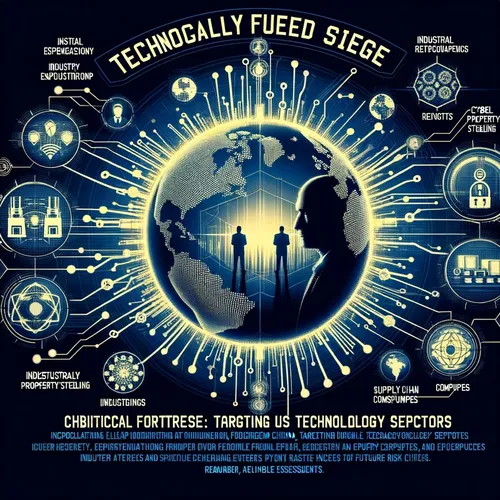Silicon Siege Sizzle: Espionage, Supply Chain Shenanigans & the US-China Tech Tango
- Author
- Quiet. Please
- Published
- Wed 13 Aug 2025
- Episode Link
- https://www.spreaker.com/episode/silicon-siege-sizzle-espionage-supply-chain-shenanigans-the-us-china-tech-tango--67359392
This is your Silicon Siege: China's Tech Offensive podcast.
Hey listeners, Ting here—cyber strategist, China watcher, and your favorite digital raconteur, cutting straight to what you need to know about Silicon Siege: China’s Tech Offensive over the past couple of weeks. Buckle up, because if you think the trade war was intense, the cyber front is pure intrigue.
Let’s start with the espionage play-by-play. Just last week, Beijing E-Town Semiconductor Technology lobbed a lawsuit at Applied Materials—yes, the California chip-tool titan—over what it calls industrial-scale trade secret theft. The twist? Applied Materials had recruited a couple of E-Town’s ex-Mattson brainiacs, then filed patents in China using their plasma know-how. Now Beijing E-Town claims foul, demanding the court shut down use of those trade secrets and hand over damages. All while the Chinese and US sides are already at legal loggerheads, with a 2022 espionage suit still unresolved. This is less “Spy vs. Spy” and more “Lawyer vs. Lawyer,” but the strategic risk for US tech is crystal clear.
Now, industrial espionage is China’s signature move, but supply chain plays are where the game keeps evolving. According to analysis from The Cipher Brief, Chinese intelligence operations are quietly expanding under the cover of Belt and Road, most recently embedding surveillance tech and personnel in ports from Peru’s Chancay to security infrastructure across Africa and South Asia. It’s never just free Wi-Fi—it’s access, leverage, and ultimately, data siphoning on a global scale.
Over in the States, policy zigzags can rival the wildest cyber maneuvers. This week alone, President Trump inked a pact letting Nvidia resume sending its slightly less cutting-edge AI chips—the H20s—to China, in exchange for a Treasury cut of any profits, even as advanced chip exports remain banned. Policy wonks are crying foul: if the White House keeps retreating, might deep learning chip secrets slip through? According to Le Monde and AInvest, this drama sows chaos for everyone from Intel’s CEO to investors on both sides, with American and European industry doubting DC even has a plan, while Chinese strategists play the long game with Xi Jinping’s “Made in China 2025.”
And the industrial espionage pressure isn’t just vaporware. The US Justice Department’s “China Economic and Technological Espionage Initiative” is dialed to eleven, prosecuting not just outright hackers but also insiders and suppliers for IP theft and trade secret leakage. Think of the Fujian Jinhua-Micron case, or TSMC’s legal battle with SMIC over poached engineers—these are not isolated breaches, but a systemic campaign to leapfrog US productivity in everything from AI accelerators to advanced chip packaging.
What’s next? Industry experts warn that the real risk lies in supply chain poisoning—hardware backdoors, firmware tampering, and dependency on strategic rare earths—all giving Beijing a hand on the red button if tensions boil over. With the EU now copying Trump’s tariffs, the race is on for national tech autonomy, yet supply chain reliance runs deeper than any sanctions can touch.
So, listeners, Silicon Siege is real and the battlegrounds are global—courtrooms, data centers, ports, and policies. Future risk? As China pushes for self-reliance and Washington grows ever more nervous, shoring up cyber defenses and vetting every chip in your stack isn’t just smart—it’s survival.
Thanks for tuning in. If you want the latest on the techno-thriller we call geopolitics, don’t forget to subscribe. This has been a quiet please production, for more check out quiet please dot ai.
For more http://www.quietplease.ai
Get the best deals https://amzn.to/3ODvOta
